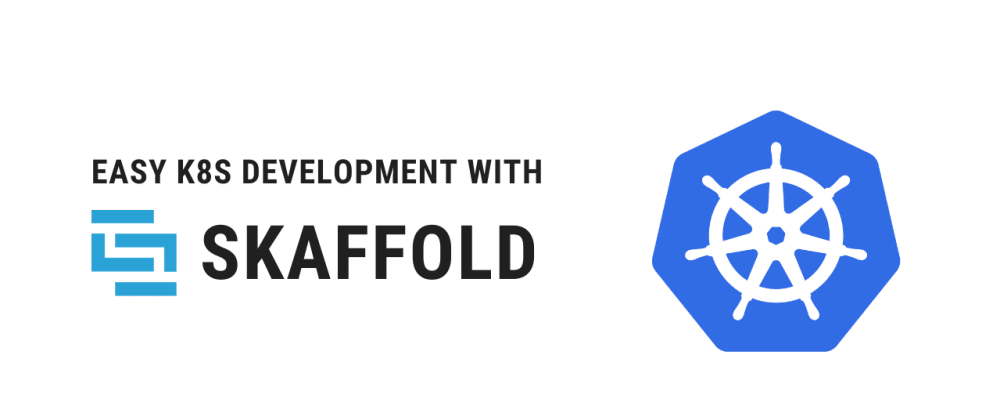- Published on
Easy Kubernetes development with Skaffold
5 min read
- Authors
- Name
- NMILI Abdelali
- @yonkoGo

Table of Contents
In this article, we'll see how we can use skaffold to develop our kubernetes native applications locally.
I will be using minikube for local kubernetes cluster
What is Skaffold?
Skaffold is a command line tool that helps with development for Kubernetes-native applications by deploying to your local or remote Kubernetes cluster as you develop.
It can handle the workflow for building, pushing, and deploying your application. Skaffold also operates completely on the client-side, with no required components on your cluster, making it super lightweight and high-performance.
It has a great developer experience, and I've been using it for a while. Learn more about Skaffold here

Install Skaffold
You can install scaffold from here
Project setup
I've initialized a pretty simple express app.
├── src
│ └── index.js
├── package.json
└── yarn.lock
Start the minikube cluster
$ minikube start

Dockerfile
Let's dockerize our app so that we can run it in our kubernetes cluster
Note: To learn more about best practices for dockerizing your applications, checkout my dockerize series!
FROM node:14-alpine
# Declare a workdir
WORKDIR /app
# Cache and install dependencies
COPY package.json yarn.lock ./
RUN yarn install
# Copy app files
COPY . ./
# Expose port
EXPOSE 4000
CMD [ "yarn", "start" ]
Also, let's quickly add a .dockerignore to exclude our node_modules
**/node_modules
Creating K8s deployment
Let's create a k8s folder and create a deployment.yaml
apiVersion: apps/v1
kind: Deployment
metadata:
name: app
labels:
app: app
spec:
replicas: 1
selector:
matchLabels:
app: app
template:
metadata:
labels:
app: app
spec:
containers:
- name: app
image: node-app
resources:
limits:
memory: 512Mi
cpu: '1'
ports:
- containerPort: 4000
Exposing k8s deployment with a service
Now, let's add a k8s/service.yaml of type NodePort to expose our deployment
apiVersion: v1
kind: Service
metadata:
name: app-svc
spec:
type: NodePort
selector:
app: app
ports:
- port: 4000
targetPort: 4000
Scaffold config
And finally, we need to add a skaffold.yaml config for our app.
Full config options can be found here
apiVersion: skaffold/v2beta18
kind: Config
profiles:
- name: dev
activation:
- command: dev
build:
artifacts:
- image: node-app
context: .
sync:
manual:
- src: 'src/**/*.js'
dest: .
If you're storing your kubernetes yaml files in a custom path you can use this to skaffold.yaml
profile: ...
deploy:
kubectl:
manifests:
- custom/path/file.yaml
Start! Start! Start!
skaffold dev --port-forward

Note: We can also declare portForward config in your skaffold.yaml
portForward:
- resourceType: service
resourceName: app-svc
port: 4000
localPort: 4000
Using Buildpacks
Buildpacks enable building a container image from source code without the need for a Dockerfile.
Skaffold supports building with Cloud Native Buildpacks. This would help us simplify our skaffold.yaml
apiVersion: skaffold/v2beta18
kind: Config
profiles:
- name: dev
activation:
- command: dev
build:
artifacts:
- image: node-app
buildpacks:
builder: 'gcr.io/buildpacks/builder:v1'
This article only scratches the surface of what skaffold is capable of! You can find tons examples in the official github repository
I hope this was helpful, you can find all the code in this repository. As always, feel free to reach out anytime if you face any issues.